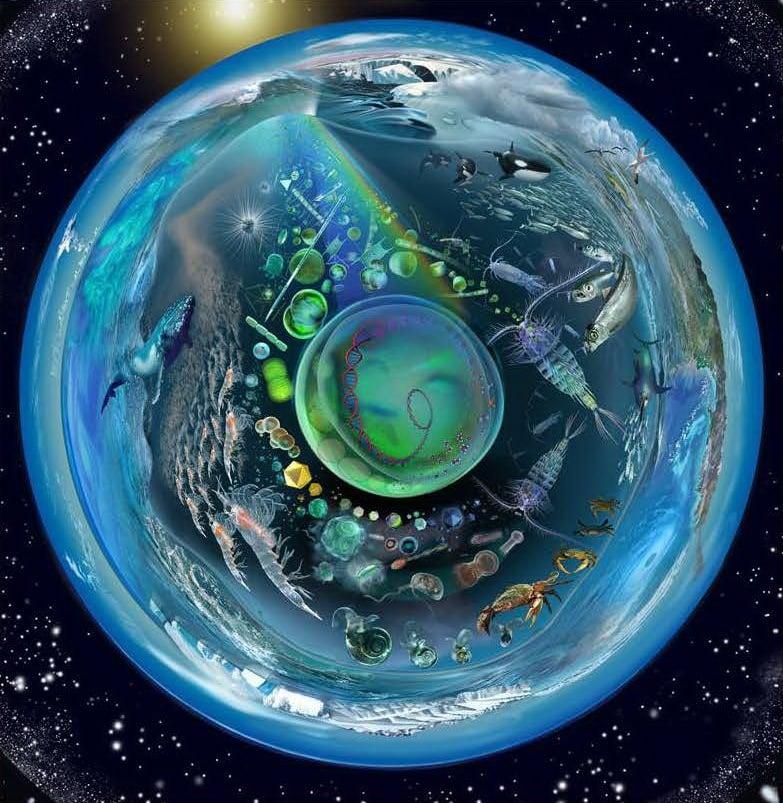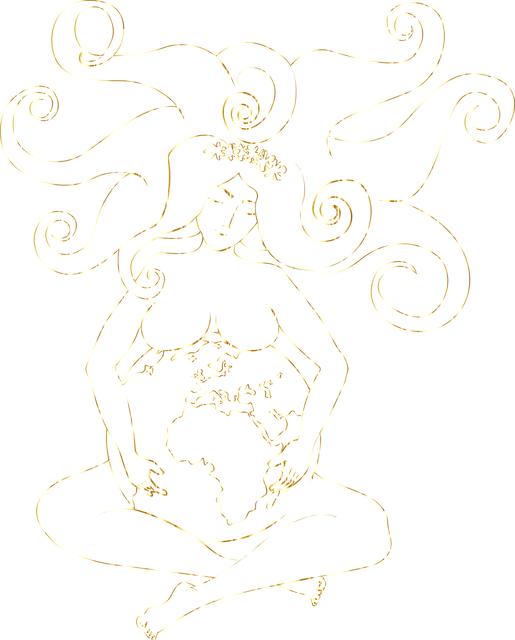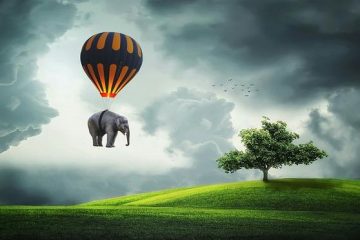Table of Contents
- Exploring the Gaia Hypothesis and Its Origins
- Understanding James Lovelock’s Vision for Earth’s Future
- The Impact of Gaia Theory on Environmental Science
- Practical Applications of Gaia Principles in Sustainability
- Reflections on Lovelock’s Legacy in Global Climate Discourse
- Q&A
- The Way Forward
Exploring the Gaia Hypothesis and Its Origins
The Gaia Hypothesis, proposed by James Lovelock in the 1970s, suggests that Earth functions as a self-regulating organism. This revolutionary idea emerged during a period of increasing concern about environmental degradation and ecological imbalance. Lovelock, originally a scientist and inventor, drew inspiration from observing the interconnectedness of life and the abiotic environment, postulating that living organisms interact with their inorganic surroundings to maintain conditions favorable for life. This perspective radically shifted how we view the planet, emphasizing the need for a holistic approach to environmental science.
At its core, the Gaia Hypothesis highlights several key principles:
- Interdependence: All living organisms are interconnected, influencing each other and their environment.
- Feedback Loops: Life processes create feedback mechanisms that regulate Earth’s climate and chemistry.
- Stability and Balance: The planet strives for stability, with biological and physical systems working together to maintain homeostasis.
The origins of the Gaia Hypothesis are rooted in archaic philosophical concepts as well as modern scientific inquiries. Lovelock combined insights from several fields, including ecology, chemistry, and systems theory. The initial reception of the idea was mixed; while it attracted attention from environmentalists, it also faced criticism from conventional science for being too idealistic. Yet, over the years, the hypothesis has gained traction, leading to increasing recognition within the scientific community. As researchers investigate more about the biosphere’s complex interactions, the Gaia Hypothesis continues to inspire groundbreaking studies on interrelated environmental systems.

Understanding James Lovelock’s Vision for Earth’s Future
James Lovelock’s ecological perspective centers on the idea that Earth functions as a self-regulating entity, an interconnected system he described through the Gaia hypothesis. This concept posits that the biosphere, atmosphere, and geosphere interact dynamically to maintain conditions conducive to life. Lovelock argues that humanity must recognize its role within this complex network, understanding that our actions significantly impact the planet’s health. The urgency of this recognition is highlighted by the alarming trends in climate change, biodiversity loss, and ecosystem degradation.
To comprehend Lovelock’s prophetic vision, several key elements must be considered:
- Interdependence of Life: Every organism plays a role in sustaining the delicate balance of Earth’s systems.
- Technological Dependency: While technology has the potential to mitigate environmental issues, Lovelock warns against over-reliance on it, emphasizing the need for a harmonious coexistence with nature.
- Forward-Thinking Policies: Lovelock advocates for innovative governance that prioritizes ecological integrity over short-term gains.
The implications of his vision extend into practical realms, urging society to shift toward sustainability. This includes rethinking agricultural practices, energy consumption, and urban development. Lovelock envisions a future where humans embrace their roles as caretakers of the planet, fostering a relationship that respects the intricate web of life. To actualize this future, collaboration across disciplines—science, policy, and community—is essential, paving the way for a resilient and thriving Earth.

The Impact of Gaia Theory on Environmental Science
Gaia Theory, posited by James Lovelock, suggests that Earth functions as a self-regulating system. This perspective has redefined how scientists view the interconnectedness of organisms and their environment. By emphasizing the holistic relationship between living and non-living components, the theory encourages a paradigm shift in environmental science. Researchers now recognize that Earth’s biological, chemical, and physical processes are intricately linked, fostering a deeper understanding of ecosystems and their vulnerabilities.
One significant impact of Gaia Theory on environmental science is the conceptualization of climate change as a complex feedback loop influenced by biological activity. The interactions between microorganisms, plants, and atmospheric conditions contribute to climate regulation. This insight has led to more robust models for predicting climate dynamics, allowing scientists to:
- Identify the role of biodiversity in maintaining ecological balance.
- Analyze how human activity disrupts these intricate systems.
- Develop strategies that leverage natural processes for climate mitigation.
Moreover, Gaia Theory has inspired innovation in sustainable practices. Emphasizing the interdependence of all life forms, environmental policies now advocate for solutions that not only minimize human impact but also enhance ecosystem resilience. This approach has manifested in:
| Innovation | Description |
|---|---|
| Regenerative Agriculture | A farming practice that restores soil health and biodiversity. |
| Green Infrastructure | Designing urban spaces to mimic natural ecosystems, aiding in water management. |
| Closed-Loop Systems | Recycling resources in production processes to minimize waste. |

Practical Applications of Gaia Principles in Sustainability
The Gaia principles, established by James Lovelock, offer a compelling framework that can be directly implemented into various sustainability practices. By viewing Earth as a single, self-regulating system, these concepts encourage a holistic approach toward environmental management. This perspective motivates individuals and organizations to consider the broader implications of their actions, ultimately fostering a deeper connection to the environment. Some practical applications include:
- Regenerative Agriculture: This farming practice emphasizes soil health and biodiversity, working in harmony with natural processes to create sustainable ecosystems.
- Urban Green Spaces: Integrating parks and green roofs in urban areas can enhance biodiversity, improve air quality, and mitigate heat island effects.
- Circular Economy Models: By designing products for longevity, repairability, and recyclability, businesses can mimic natural cycles, reducing waste and resource depletion.
Furthermore, the Gaia principles can inspire innovative technologies aimed at promoting sustainability. For instance, the development of biomimicry strategies borrows from nature’s designs and processes to solve human challenges. By incorporating biological concepts into technology and design, we can create systems that are both efficient and environmentally friendly. A few notable technologies include:
| Technology | Description |
|---|---|
| Bio-inspired Materials | Materials that mimic natural substances (like spider silk) for better performance and sustainability. |
| Solar Energy Systems | Design inspired by photosynthesis to create highly efficient energy capture systems. |
| Water Harvesting Techniques | Leveraging natural processes to efficiently collect and utilize rainwater. |
Another significant aspect of implementing Gaia principles lies in the education and community engagement. Raising awareness about the interconnectedness of all living systems can empower individuals to make informed decisions and advocate for sustainable practices. Workshops, community projects, and collaborative initiatives can help cultivate a sense of stewardship and responsibility toward the planet. By fostering a culture of sustainability, we not only enhance resilience in our communities but also contribute to the global effort of maintaining Earth’s balance.

Reflections on Lovelock’s Legacy in Global Climate Discourse
James Lovelock’s contributions to climate discourse are irrefutable and profound. His pioneering concept of the Gaia Hypothesis has reshaped the way we perceive the interconnectedness of life and the environment. By proposing that Earth functions as a self-regulating system, Lovelock invited scientists, policymakers, and the public to consider the planet’s health as a collective responsibility. This notion has propelled discussions around sustainability and environmental ethics, emphasizing the formal interdependence of all organisms and their habitats.
Throughout his career, Lovelock’s ideas have spurred a multitude of debates and explorations. Key aspects of his legacy include:
- Integration of Science and Philosophy: Lovelock blurred the lines between scientific research and philosophical inquiry, urging us to rethink our role within the Earth’s ecosystems.
- Critique of Conventional Environmentalism: He challenged the traditional views on conservation, suggesting that holistic approaches are essential for real progress.
- Advocacy for Technological Solutions: Lovelock’s support for innovative technologies as a means to combat climate change has influenced many modern environmental strategies.
To encapsulate Lovelock’s impact, it is useful to consider notable milestones in his life and work:
| Year | Event |
|---|---|
| 1970 | Publication of the Gaia Hypothesis |
| 1987 | First Earth Summit in Rio de Janeiro |
| 2006 | Publication of “The Revenge of Gaia” |



0 Comments